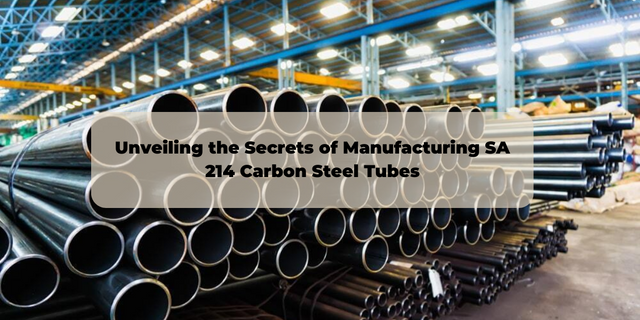Carbon steel tubes have become some of the most popular steel products used in various applications due to their durability, strength, and affordability. Among the different types of carbon steel tubes available in the market, the SA 214 carbon steel tubes stand out as a preferred option for many consumers. For anyone interested in the production of these tubes, understanding the manufacturing process is crucial. This blog post takes a closer look at the manufacturing process of SA 214 carbon steel tubes and provides insights into the behind-the-scenes activities that go into producing these high-quality products.
SA 214 carbon steel tubes are produced through a specialized process that ensures consistent and high-quality output. It all starts with the careful selection of raw materials, including steel billets and bars, which are sourced from reputable suppliers. The billets and bars are then subjected to intense heat treatment, including normalizing, annealing, and quenching, to achieve the desired mechanical properties such as improved ductility and machinability.
The next step is the hot rolling of the billets into tubes, which is done in the hot rolling mill. The rolling mill is equipped with high-speed rollers that reduce the diameter and wall thickness of the tube to the desired dimensions. The tubes are then subjected to various treatments such as straightening, cutting, and inspection to ensure they meet the specified quality and dimensional requirements.

After the hot rolling process, some tubes may undergo additional cold drawing, which involves pulling them through a series of smaller dies to achieve more precise dimensions and a better surface finish. This process also helps to improve the mechanical properties of the tubes, making them stronger and more resistant to wear and tear. The tubes are then cleaned and coated with rust inhibitors to protect them from corrosion during transportation and storage.
Finally, the tubes go through a rigorous testing and inspection process to ensure they are free from defects and meet the required standards. These tests may include non-destructive testing, mechanical testing, hydrostatic testing, and ultrasonic testing. Only after passing these tests is the tube ready for shipment to the customer.
Conclusion:
SA 214 carbon steel tubes are a crucial component in various industrial applications such as heat exchangers, boilers, and condensers. Understanding the manufacturing process of these tubes can help customers make informed decisions when purchasing them and ensure they get the most out of them. From selecting raw materials to the final quality and dimensional inspection, the process of producing SA 214 carbon steel tubes is a complex one that requires skill, precision, and attention to detail. By choosing to purchase these tubes, a consumer is choosing durability, strength, and affordability.